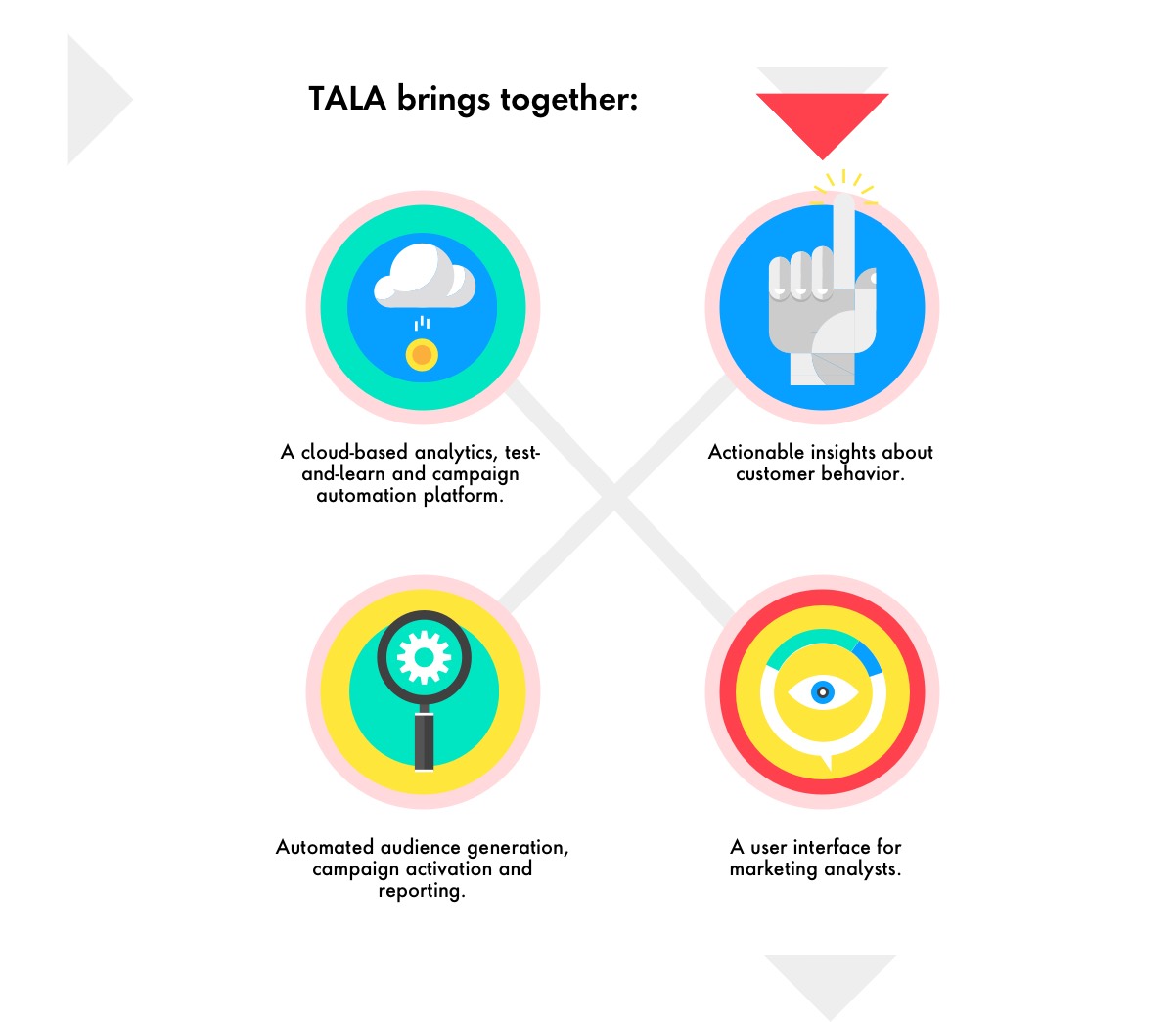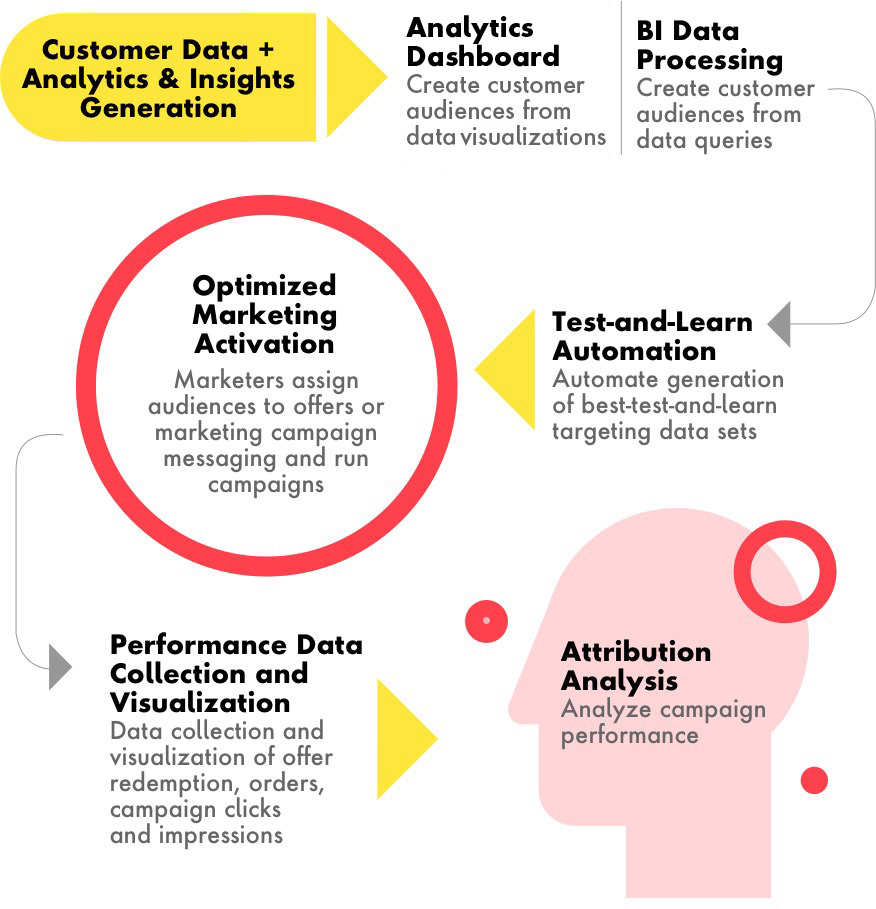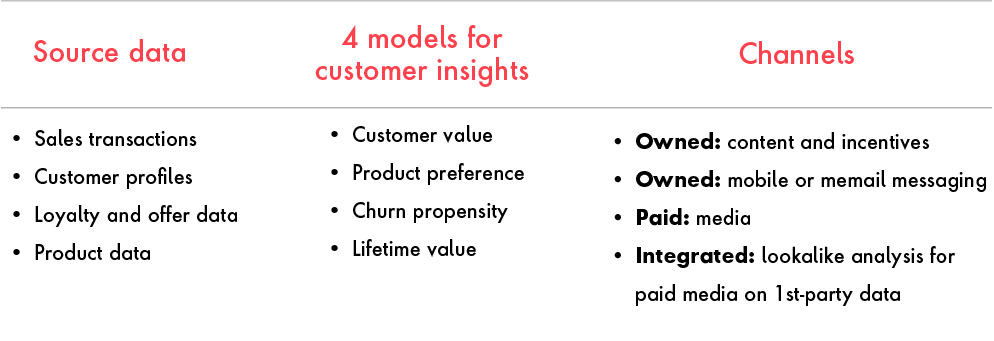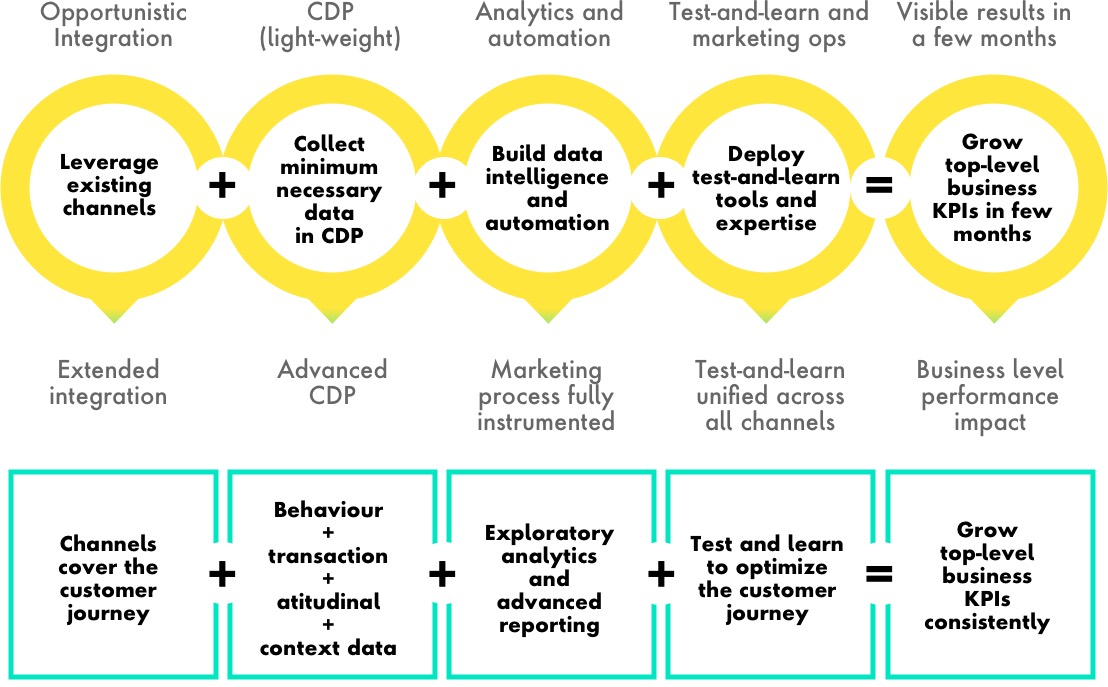What issue can we solve for you?
Type in your prompt above or try one of these suggestions
Suggested Prompt


Publicis Sapient Solutions
Test-and-Learn Automation
Test-and-Learn Automation
Driving digital engagement and repeatable growth through marketing automation and accelerated by Publicis Sapient
TALA: Test-and-Learn Marketing Automation
Test-and-Learn Automation (TALA) helps organizations like quick-service restaurants (QSRs) and other consumer-facing industries improve the impact of marketing campaigns.
Within a few months, businesses get results that help them serve the best offer, content or recommendation to the right customer at the right time. Outside of marketing campaigns, TALA can also be used to improve the customer user experience on mobile apps and sites.

The solution consists of five steps
The Promise of TALA: Personalization Over Mass Marketing
TALA’s progressive approach creates a personalization strategy capable of avoiding pitfalls of mass marketing such as when customers receive irrelevant offers, content and recommendations, which may have potentially negative business implications. The solution’s toolset of integrated data, analytics and marketing activation capabilities is built on the Google Cloud Platform (GCP) and enables the five steps outlined above. TALA does not require a large investment to get started with an initial set of use cases. As an organization begins to see returns from campaigns, it can later expand experiments, campaigns and test-and-learn to use cases across all channels.
With TALA, businesses learn which campaigns drive value for their audiences. It also identifies how and when to repeat those campaigns to keep customers coming back.
A data platform for analytics, test-and-learn and campaign optimization
Data collection, curation, insights, activation, reporting and visualization
This chart depicts the flow of TALA, from the ingestion, processing and generation of insights to the creation and execution of test-and-learn experiments. Highlighted are the recommended data sources, machine learning models and applicable channels.
Test-and-Learn vs. Artificial Intelligence (AI)

Customer behaviors are often unpredictable. Relying on AI alone to uncover trends in data risks the technology missing new behaviors. Test-and-learn, combined with AI, is more efficient for the following reasons:
- AI generates well-qualified hypotheses, but it cannot predict whether these hypotheses will generate more revenue or better margins. A business will never have enough recent and complete historical data for AI algorithms to provide these insights. Test and learn generates new data through short, high frequency experiments to identify the probability of a profitable outcome.
- Guesswork is not a predictable recipe for success when working with massive amounts of data in a fast-paced, high-transaction environment. Test-and-learn rigorously identifies and validates hypotheses for marketers during campaign planning.
- Test-and-learn eliminates unproductive campaigns and avoids wasted time, resources and money (e.g., discount offers).
- A positive side effect of test-and-learn experimentation is the creation of a repository of proven facts about customer habits, product preferences and trigger mechanisms that also answer “what-if” questions about the business.
A key learning example from test-and-learn came from a quick-service restaurant (QSR) testing the following hypothesis: If customers receive offers they like, will they spend more money? We learned that visitor frequency and number of items purchased generally increased. Interestingly, margins for high-value customers dropped slightly, and margins for customers just below that level went up. In other words, high-value customers would have ordered from the restaurant without offers, and the discount represented lost revenue.
Start simple, scale fast and demonstrate results along the way
Publicis Sapient’s deployment of TALA within various client environments and well-chosen case sets generated the following successful results within months:
- A global QSR saw its revenue grow by millions without margin loss.
- One of the world’s largest logistics companies increased its revenue by more than $200 million.
- A North American airline saw its online bookings increase by double-digit percentage points when applying test-and-learn to its online booking user experience and associated content.
Start simple and scale up fast
In this diagram, the top row shows the quick start path to enable TALA, and the lower row explains how each activity scales up over time.
Why now and why Google?
Accessible and affordable cloud data processing and machine learning technologies are enabling the development of personalized insights on large data sets. The deployment of data-driven analytics and marketing automation capabilities on cloud platforms like GCP can be done in a matter of weeks.
Google offers a variety of analytics tools, including Looker and Vertex, which are directly integrated into their cloud data warehouse, BigQuery. GCP is also an environment for building applications and APIs, and Publicis Sapient is combining these native GCP features into the TALA platform for clients. The benefit of working with GCP is the simplicity of assembling its capabilities for a defined purpose and the deep level of security provided.
Why Publicis Sapient created TALA



To offer organizations a low-risk marketing and data platform to support a high rate of productive campaigns.
To generate test results quickly at a low cost by building on platforms and capabilities already used by an organization or with small, incremental investments.
To use and complement the power of AI to enable personalized offers.
To provide a tool that is attuned to the business environment and can accommodate running a high volume of experiments.
To assist with the development of facts and insights a marketer can use for strategic planning.
To setup an optimization framework for personalization that starts with campaigns and further extends to user experiences.
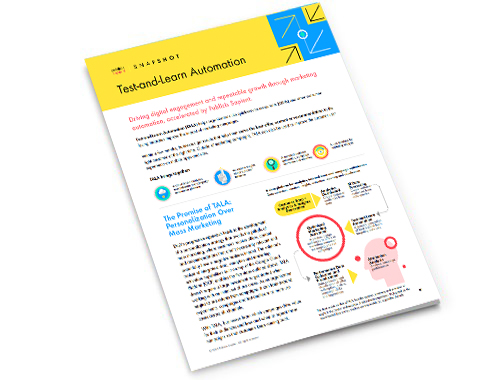
Our TALA Snapshot
Related Insights
-
{{item.eyebrow}}
{{item.publicationSource}} | {{item.publicationDate}}
{{item.title}}
{{item.description}}
Stay connected
Start a Conversation
-

Andre Engberts
Vp Technology, Publicis Sapient




